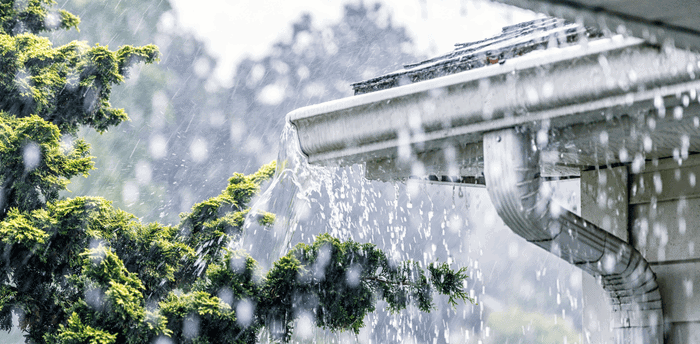Are you a California homeowner wondering what to do with your worn roof? It’s easy to feel overwhelmed as you think through the choices ahead. You might feel embarrassed to ask what factors matter most in your location. Let’s explore the key aspects of choosing the right roofing materials in California.
Choosing the right roofing materials in California involves the sun, wildfires, and occasional heavy rains. Selecting a roof that offers energy efficiency, long life, and safety is essential. Here’s what you should know as you consider roofing products for your Golden State home.
Table of Contents
- California's Unique Roofing Challenges
- Matching Roof Styles to California Architecture
- Popular Roofing Materials in California
- Factors to Consider When Choosing the Right Roofing Materials in California
- Fire Ratings of Roofing Materials: A Crucial Consideration
- Navigating Regulations and Cool Roof Standards
- The Future of Roofing: Sustainable and Solar Options
- Finding a Reliable Roofing Contractor
- Conclusion
California's Unique Roofing Challenges
California presents some tough challenges. The state’s diverse climate, from coastal fog to inland heat, affects roofing performance. Wildfire risks are also a factor, making fire resistance vital.
Homes also need protection from the sun’s UV rays during hot climates and temperature swings. It is vital to take the elements into consideration before you start searching for a local roofing contractor. Selecting a durable roofing system that can withstand the test of time is crucial.
Matching Roof Styles to California Architecture
California boasts diverse architecture, influencing popular California roof styles. Roof styles range from Spanish Colonial to modern designs. Each style works best with certain roof types.
- Spanish Tile: This iconic style features curved clay tiles. These S-tiles evoke a historic feel and handle heat well.
- Craftsman: This style uses low-pitched roofs with exposed rafters. It values simplicity and functionality.
- Mediterranean: This design also uses clay tiles and low-pitched roofs. This enhances the elegance of a home.
- Modern: Contemporary homes often sport flat roofs. These roofs offer a sleek look but need proper drainage.
Different regions need different roofing. Are you close to the beach, in a fire-prone area, or somewhere else? The proper material can greatly affect your roof investment.
Popular Roofing Materials in California

Let’s check out a few of the common types. Each offers distinct benefits. Understanding common roofing options is a key first step.
Asphalt Shingles: The Affordable Option
Asphalt shingles are common because of their affordability. The ease of installation and wide range of styles make them a choice for many homeowners. Warranties also add to their appeal. Still, be sure to consider the quality. Asphalt breaks down over time because of sun exposure.
Consider roofing materials with UV ray protection in Southern California to make sure your investment lasts. When weighing cost versus longevity, many California homeowners choose asphalt shingles for their affordable roofing solution.
Tile Roofing: Classic California
Tile roofs define California style. Both clay and concrete tiles offer durability. Plus, they fit the architectural vibe of areas like Southern California. Consider using tile roofs to align with popular California roof styles. The tiles are resistant to the elements. The material naturally helps with home temperature regulation, aligning with California’s cool roof standards.
A light-colored glaze boosts sunlight reflection, too. Because tile is a great choice for keeping homes cool, many choose this material.
Metal Roofing: Modern and Efficient
Metal roofs stand out for energy efficiency. Metal roofing reflects sunlight, keeping homes cooler and potentially cutting cooling costs up to 15 percent. Choosing metal roofing could lead to lower utility bills. The durability and light weight provide benefits.
Their fire resistance is a consideration in fire-prone areas since metal roofs come with a Class A fire rating. The resistance to leaks is likely to boost metal roof use in stormy areas. For those looking for an extremely durable option, metal roofs are a great option.
Slate Roofing: Elegant and Durable
Slate roofing, while a premium option, is also available in California. Natural slate offers exceptional durability and a timeless aesthetic, making it suitable for various architectural styles. However, its significant weight may require structural reinforcement of the roof. To address this, synthetic slate options have emerged, providing a lighter alternative that mimics the look of natural slate while often enhancing fire resistance and durability.
Both natural and synthetic slate offer excellent fire ratings, a crucial consideration in California’s wildfire-prone regions. Homeowners seeking a sophisticated and long-lasting roofing solution may find slate to be an ideal choice, provided they carefully consider the weight and cost implications.
Wood Shingles and Shakes: Natural Beauty
For a classic, natural look, consider wood shingles and cedar shakes. Cedar and redwood provide beauty. Still, real wood demands maintenance. It can be vulnerable to fire. You may have to use fire retardants.
Keep in mind this choice might also be restricted in certain areas because of fire safety concerns. While they offer a certain aesthetic appeal, cedar shakes might not be the best choice for fire-prone regions.
Synthetic Roofing: Combining Beauty and Durability
Synthetic roofing is becoming more popular. Synthetic options, like synthetic cedar shakes, offer wood aesthetics without the upkeep. They often boast top fire and impact ratings. As the rise of eco-friendly roofing materials continues, consumers are able to get familiar with options like this.
Keep in mind, though, that it’s essential to make an informed purchase vendor with this material. Synthetic roofing can offer a blend of beauty and practicality.
Factors to Consider When Choosing the Right Roofing Materials in California

Several things affect your roof choice. Weigh these aspects for the ideal outcome. Carefully consider these elements for the best roofing decision.
Climate and Weather Considerations
California’s climate presents diverse weather conditions. This spans from heatwaves to coastal fog. Choosing the right roofing materials is crucial to withstand these climate differences. These variations are critical when selecting the best material.
Consider roofing materials that can handle both intense heat and moisture. A quality material can help with keeping homes protected. The right roofing can also make your home more comfortable year-round.
Durability and Longevity
Durability is critical for any roof. Lifespans vary between roofing products. For example, metal roofs can potentially last 50 years or longer. Clay tiles even hit the 100-year mark with proper maintenance.
Consider material lifespan. Doing so can mean fewer long-term expenses. When looking at long-lifespan roofing, consider a few popular options.
Energy Efficiency and Cost Savings
A roof’s energy efficiency matters. Cool roofs and light colors save money. Light-colored roofing might lower cooling needs up to 15 percent.
The DOE offers advice. Consult their Energy Saver page on “cool” roofs for various roof types. The Cool Roof Rating Council has a cool roof directory, too. Energy-efficient choices, like cool roofs, contribute to significant cost savings.
Aesthetics and Home Value
Your roof impacts curb appeal. Materials should match your home’s architectural style. The aesthetic appeal affects market value.
Keep that in mind when selecting the color. Light roofs are not always best because they can discolor quickly if not powerwashed and cleaned appropriately. A well-chosen roof will increase the value of your property.
Cost and Budget
Budget plays a part for any homeowner. Keep in mind material and installation costs.
Asphalt shingles often cost less than other roofing materials. The global roofing market had an estimated value of $82.2 billion in 2023, a 5.5% increase from previous years.
Keep that data point in mind as you’re planning a budget for a new roof. It may be time for you to jump into this market. Setting a budget helps you choose affordable roofing materials that still offer quality and longevity.
| Material | Cost | Lifespan | Benefits |
| Asphalt Shingles | Affordable | 15-30 years | Wide range of styles, easy installation |
| Tile Roofing | Moderate to High | 50-100 years | Durable, energy-efficient, classic look |
| Metal Roofing | Moderate to High | 40-70 years | Energy-efficient, lightweight, fire-resistant |
| Wood Shingles | Moderate | 20-40 years | Natural beauty, traditional look |
| Synthetic Roofing | Moderate to High | 30-50 years | Durable, low-maintenance, fire-resistant |
Fire Ratings of Roofing Materials: A Crucial Consideration
In California, where wildfire risks are a significant concern, understanding roofing material fire ratings is essential. These ratings indicate a material’s resistance to fire, and they play a critical role in protecting your home.
Here’s a breakdown of the common fire ratings:
Class A
- This is the highest level of fire resistance.
- Materials with a Class A rating offer the best protection against severe fire exposure.
Class B
- These materials provide moderate fire resistance.
- They can withstand moderate exposure to fire.
- Fire-retardant-treated wood shakes often fall into this category.
Class C
- This rating indicates the lowest level of fire resistance.
- These materials are suitable for areas with minimal fire risk.
Unrated
- Materials that do not meet the requirements for Class C.
- Untreated wood shakes are an example of this.
Important considerations
- Assembly Ratings: Some roofing materials achieve a Class A rating when used in combination with specific underlayment or other components. This is known as an “assembly rating.”
- Local Codes: Always check local building codes and regulations, as they may have specific requirements for fire-resistant roofing materials.
- Professional Advice: Consult with a qualified roofing contractor to ensure you choose a material that meets your local fire safety standards and provides adequate protection for your home.
When choosing a roofing material in California, especially if you live in a wildfire-prone area, prioritize Class A fire-rated options. This can significantly improve your home’s resilience against fire.
California mandates cool roof standards through the California Energy Commission, focusing on specific solar reflectance and thermal emittance criteria. Compliance with these regulations, achievable with materials like light-colored glazed clay tiles, directly translates to reduced cooling costs and a more energy-efficient roof.
The Future of Roofing: Sustainable and Solar Options
The demand for eco-friendly roofing is rising, driven by a growing focus on sustainable residential construction. Utilizing recycled materials, like metal and rubber, significantly reduces environmental impact. As green building gains momentum, these sustainable choices are becoming increasingly vital.
Solar Roofing: Energy Generation
The availability of solar roofing solutions is expanding. Leading manufacturers like GAF, CertainTeed, and Tesla now offer integrated solar shingles. Incorporating these systems into your roofing can generate on-site power without compromising aesthetic appeal, offering both financial savings and enhanced energy efficiency
Finding a Reliable Roofing Contractor
Selecting a skilled contractor matters and will guarantee proper roof installs and maintenance. Check for examples of past work and certifications when hiring roofers.
Proper installation impacts roof lifespan; therefore partner with contractors with solid experience to protect your investment for many years. Additionally, an experienced roofing contractor can provide advice for common roofing challenges.
Conclusion
Choosing the right roofing materials in California is a decision that demands careful consideration, as there’s no one-size-fits-all approach. Homeowners must weigh factors like regional climate, architectural style, budget, and long-term resilience. Consulting with a qualified roofing professional is essential to navigate these complexities and ensure you select the best solution for your individual needs.
For those seeking reliable and experienced roofing services, companies like Simpli Services offer a range of solutions tailored to California’s unique demands. It’s crucial to partner with licensed and certified contractors who can provide expert guidance and ensure proper installation, safeguarding your investment for years to come.
Ultimately, a well-informed decision, combined with professional installation, will yield a durable, energy-efficient, and aesthetically pleasing roof that enhances your home’s value and provides lasting protection against California’s diverse climate



0 Comments